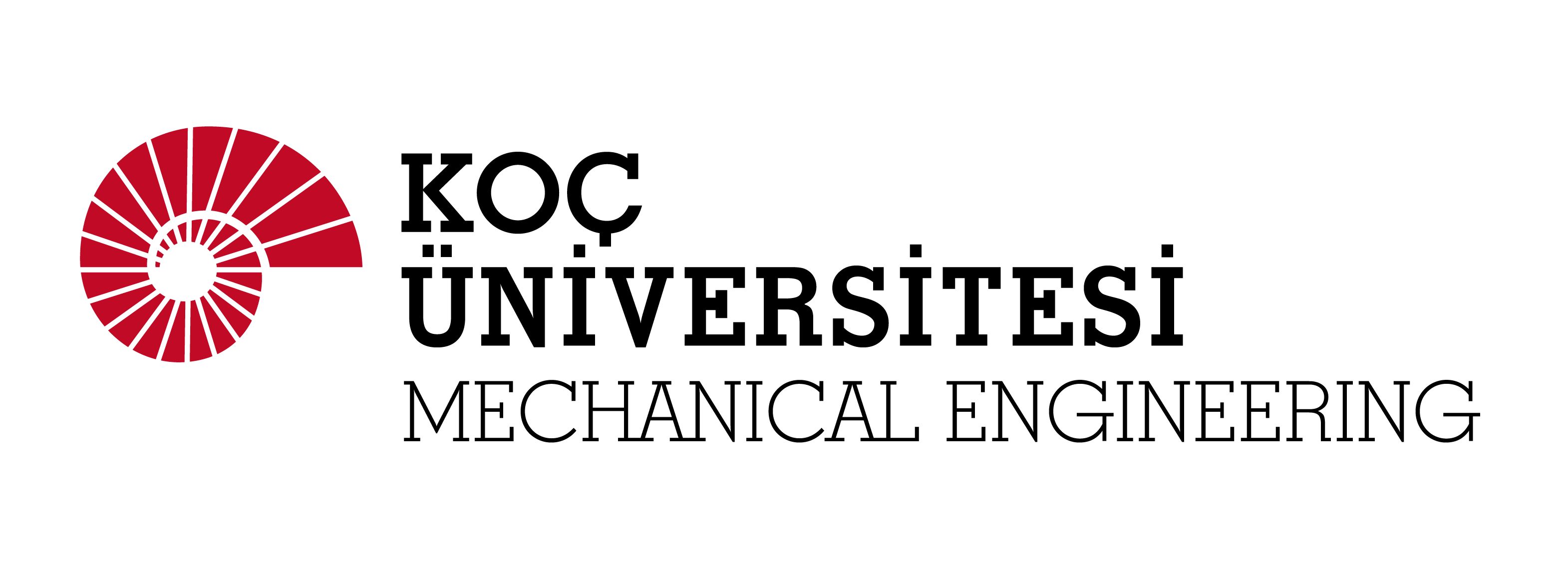MECHANICAL ENGINEERING MS THESIS DEFENSE BY MEHMET YAPAR
Title: Fluid-Structure Interaction Modelling of Plug Propagation in Compliant Airways
Speaker: Mehmet Yapar
Time: August 5, 2022, 15:00
Thesis Committee Members:
Prof. Dr. Metin Muradoğlu (Advisor, Koç University)
Assoc. Prof. Dr. Savaş Taşoğlu (Koç University)
Assoc. Prof. Dr. A. Kerem Uğuz (Boğaziçi University)
Abstract:
The lung is the largest organ that consists of many generations of liquid-lined compliant tubes. Cross-section of airways decreases at each generation down to microscopic scale at the terminal bronchioles that connect to alveoli. The liquid lining may undergo Plateau-Rayleigh instability creating a liquid plug that obstructs gas exchange for all connected distal parts of the lung. The closure occurs when the liquid film thickness exceeds a critical threshold value. Liquid film thickness is about 2-4% of airway diameter in healthy conditions but may increase up to 20% in pathological conditions. The liquid plug is ruptured violently to reopen the airways during the inspiration. Both airway closure and reopening create large mechanical stresses on the airway wall and may fatally damage the epithelial cells. The plug propagation and rupture have been studied both experimentally and computationally, but the airway wall has been usually assumed to be rigid in the previous computational models. However, especially the small airways where the plug formation is more likely to occur are highly flexible and compliant tubes that can completely collapse during the closure and reopening events. Moreover, the crackles sound that is detected by a stethoscope and routinely used for diagnostics examinations by physicians are believed to be created during the plug rupture and subsequently modified by strong fluid-structure interactions. It is therefore of fundamental importance to take the airway wall elasticity into account and examine fluid-structure interactions. In the present thesis, a sharp interface immersed boundary method is developed and combined with the front-tracking method to investigate the effects of wall elasticity on liquid plug propagation and rupture in lower airways. The immersed boundary method is first applied to simulate a single-phase flow past a solid sphere in a circular pipe, and the results are found to be in good agreement with the results obtained by Ansys-Fluent. It is also demonstrated that the immersed boundary method preserves the second-order spatial accuracy of the finite volume method used to solve the flow equations. Then extensive simulations are performed to investigate the fluid-structure interactions in plug propagation and rupture in a compliant tube representing the 9th generation of an adult lung. The tube is assumed to be infinitely long, thin-walled, and impermeable. The wall elasticity is modeled using linear elastic theory. The results show that there exist strong fluid-structure interactions during the plug propagation, plug rupture, and post-rupture phases. The present study lays the foundation for future work in which a full three-dimensional airway model will be developed, and acoustic signals generated during the airway closure and reopening will be examined.
Keywords: Airway reopening, Immersed Boundary Method, plug propagation and rupture,
